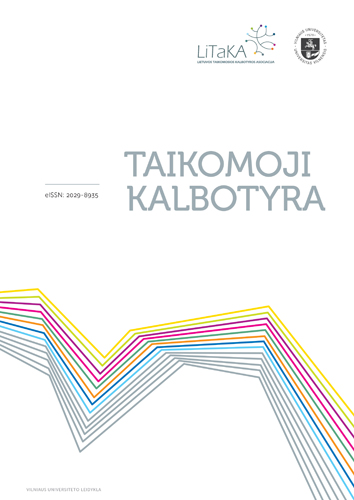Kam reklamai skoliniai? Leksikos skoliniai reklamos tekstuose
What are borrowings in advertising for? Lexical borrowings in advertising
Author(s): Laima NevinskaitėSubject(s): Descriptive linguistics, Marketing / Advertising
Published by: Vilniaus Universiteto Leidykla
Keywords: new borrowings; reasons for borrowing; advertising; advertising language; language contact; English;
Summary/Abstract: The aim of the article is to analyse reasons of using new lexical borrowings in advertising, taking into account features of advertising as a genre. The empirical basis of the analysis consists of advertisements including borrowings that were collected in the Database of the New Borrowings. The article offers a qualitative analysis of borrowings in advertising.The theoretical basis of the article is a generalised classification of reasons for lexical borrowing, which includes designative, semantic, stylistic and sociopsychological reasons. Further a more detailed explanation is given by presenting the results of research on multilingual advertising: borrowings are used to fill in a semantic gap; because of creative motives in search for more interesting ways of expression; they help to associate the product with a particular cultural stereotype; or they can help to express the identity of a particular social group. From the viewpoint of advertisers, borrowings help to attract attention to the advertisement or product, to demonstrate its advantages by a symbolic value of other languages, to address a particular audience or to play with language for an emotional effect.The analysis of the Lithuanian data revealed a trend of the majority of borrowings used in advertisements for designative and semantic reasons, in order to name a new object. The origin languages of the borrowings vary; they include English, French, Italian, Spanish, Japanese, and Chinese. Some borrowings are used next to their equivalent of Lithuanian origin for metalinguistic reasons. In the group of stylistic reasons, English borrowings are used for creating allusions, language play, and in order to attract the attention of the audience. In the group of sociopsychological reasons, borrowings from English are most prominent; they mostly serve to emphasize the exceptional value of the product. They might also be used as euphemisms. For symbolic reasons, borrowings from French and Italian are also used. English borrowings that are a part of youth slang are used in advertisements to create a youthful identity of the product and to address young consumers.The analysis of spelling of borrowings (original vs. adapted) might also be explained by their functions in the text: original spelling helps to emphasize the authenticity of the designated object, increases the symbolic value of the borrowing. In contrast, the adapted spelling of marked borrowings in the advertisements addressed to young people emphasizes their slang origin.In summary, the analysis of the Lithuanian advertisements confirmed most of the reasons for borrowing found in previous studies on multilingual advertising. The paper concludes that borrowings do not only serve a supplementary role when they are needed to fill a lexical gap, but are also intentionally used as a stylistic, symbolic, identity construction tool in order to enhance the effectiveness of advertisements.
Journal: Taikomoji kalbotyra
- Issue Year: 2014
- Issue No: 3
- Page Range: 1-30
- Page Count: 30
- Language: Lithuanian

